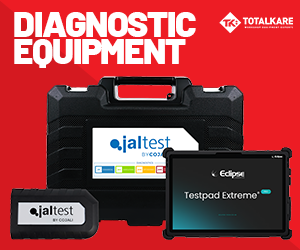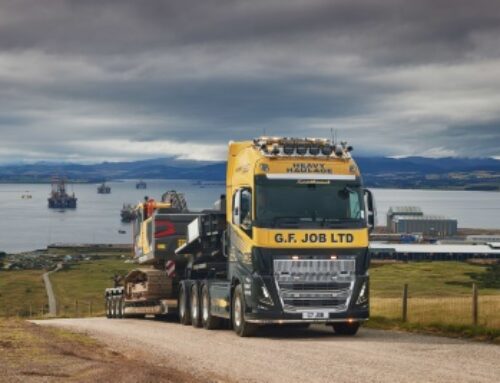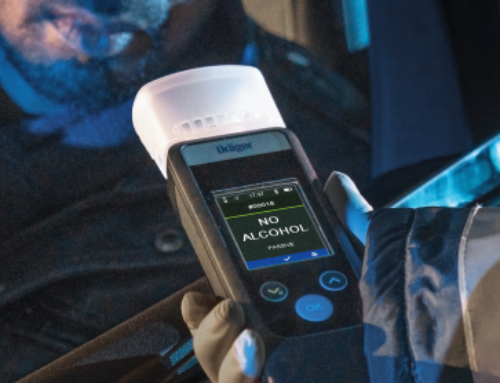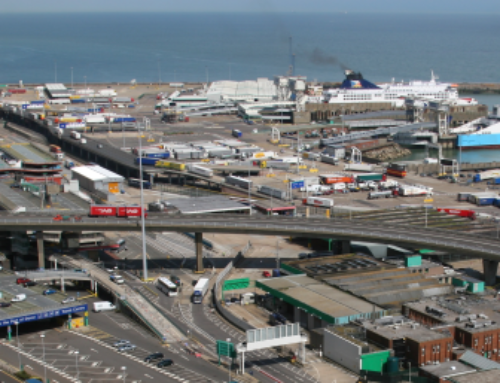Peers quiz DfT on HGV charging infrastructure
 Members of the House of Lords questioned the government last month on its strategy for charging and refuelling infrastructure to facilitate the uptake of zero-emission trucks.
Members of the House of Lords questioned the government last month on its strategy for charging and refuelling infrastructure to facilitate the uptake of zero-emission trucks.
The Lords debate on HGV charging and refuelling followed recent calls from across the transport industry, including from trade groups and vehicle manufacturers, for the government to set out a clearer roadmap for how it will support the transition to zero-emission technologies for heavy vehicles.
Baroness Randerson, Lords transport spokesperson for the Liberal Democrats, asked the Department for Transport (DfT) what steps it was taking: “to encourage and develop a network of public charging and refuelling sites for zero-emission HGVs, and what policies are they adopting to encourage and facilitate the development of charging and refuelling infrastructure at commercial HGV depots.”
Lady Randerson also asked what the government was doing to ensure sufficiently large grid capacity, given that: “the National Grid is giving applicants for extra grid capacity completion dates and access dates that are well into the 2030s.”
The transport minister, Baroness Vere of Norbiton, replied: “The government recognise that charging and refuelling sites required to support zero-emission HGV uptake will need to increase before 2040. Last year’s future of freight plan committed to convening industry stakeholders to develop a plan for rollout, which is happening through our Freight Energy Forum. Extensive stakeholder engagement will begin later this year…
“We need to discuss with industry stakeholders exactly how they feel the strategy for the rollout of zero-emission vehicles will go, particularly at the heavy end.
“That is why we will publish the zero-emission HGV infrastructure strategy later this year, once we have been able to discuss it with those stakeholders.
“The government are confident that the grid can cope with the increased demand, and the next step is to ensure that depots can connect to it. We are working with the [distribution network operators] to find the most cost-effective solution to that.”
Lord Howell of Guildford asked whether fleets of HGVs on charge would add “a colossal load” to the electricity supply and transmission system, “even to the point, some say, that the existing cables could melt, causing local outages?”
Replying for the government, Lady Vere said this was why, as part of the drive to decarbonisation, it was investing £200 million in the zero-emission road freight demonstrator plan, to look at all available technologies.
“For some vehicles, battery electric will be the best option, but for others we expect hydrogen fuel cells to be far more relevant,” she said, adding that the planned zero-emission HGV infrastructure strategy would: “examine what a network of green hydrogen sites would look like, as well as the impact on the grid and where on it the additional electricity will be needed.”
Lord Hannan of Kingsclere asked what plans DfT had to work with producers of internal combustion engines (ICEs) running on hydrogen.
Lady Vere replied: “We believe that [hydrogen ICEs] are not zero-emission engines as they produce trace carbon dioxide and NOx. They also have very low energy efficiency in real-world applications, at about 25 per cent, compared to 90 per cent for battery electric and about 60 per cent for hydrogen fuel cells.”
Lib Dem co-deputy leader in the Lords, Baroness Walmsley, raised the question of whether there were: “sufficient dedicated recharging facilities available for commercial vehicles so that large and small commercial vans are deterred from using the often scarce recharging facilities for private cars available at motorway services?”
Lady Vere said: “The government are working at pace on electric vehicle chargers, for both commercial and private use. We are focusing on Project Rapid and the rapid charging fund, which looks at long-distance journeys. The second area is local electric vehicle infrastructure, including on-road charging in local areas, which can be used by commercial vehicles as well.”












